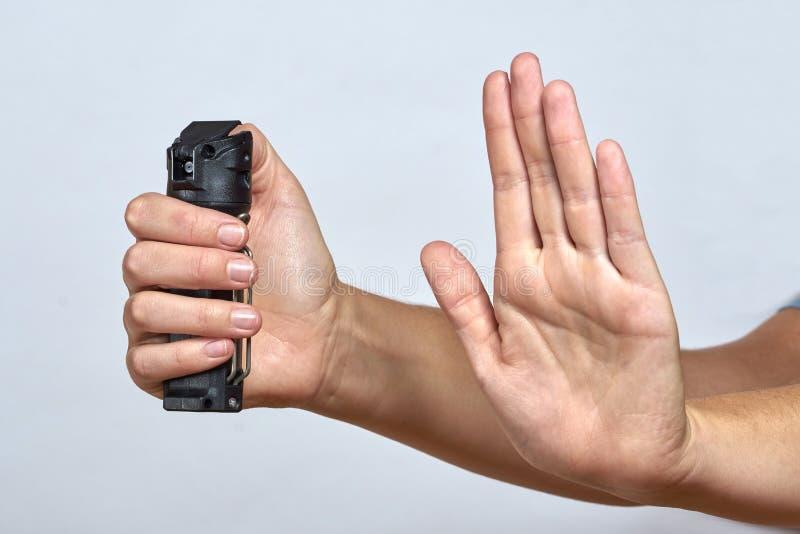Table of Contents
- Choosing the Right Pepper Spray for Optimal Accuracy
- Mastering Your Grip and Stance for Stable Aim
- Target Zones That Maximize Pepper Spray Effectiveness
- Practicing Safe Deployment Techniques Under Stress
- In Summary
Choosing the Right Pepper Spray for Optimal Accuracy
When selecting pepper spray for precise aiming, consider factors beyond just brand reputation. The size and spray pattern are crucial elements that directly affect your ability to hit a target quickly and accurately. Compact, slim canisters often allow for better grip and steadier aiming, especially under stress. Additionally, sprays with a strong, narrow stream rather than a broad mist help maintain accuracy at various distances by reducing drift caused by wind or movement.
Another essential aspect is the spray’s range and nozzle design. Look for products that offer a range between 7 to 12 feet, giving you sufficient space to react while maintaining control. Nozzles designed with a consistent output and minimal clogging ensure your spray performs reliably every time. When shopping, prioritize sprays with ergonomic triggers or flip-top safety caps to facilitate swift deployment without fumbling. Remember these essentials:
- Compact size for better handling
- Narrow stream for improved targeting
- Adequate range (7-12 feet) for safety and accuracy
- Ergonomic trigger mechanisms for quick release
- Reliable nozzle design to prevent clogging
Mastering Your Grip and Stance for Stable Aim
Achieving a precise shot with pepper spray starts with how you hold and position yourself. Grip the canister firmly but avoid excessive tension that may cause shaking. Use your dominant hand to encircle the can, placing your index finger on the actuator for quick, controlled bursts. Your support hand should stabilize by wrapping around or bracing your dominant wrist, enhancing steadiness. Maintain a balanced yet relaxed grip, which allows agility and minimizes fatigue during prolonged threat situations.
Equally crucial is adopting a stance that promotes stability and readiness. Position your feet shoulder-width apart, with your knees slightly bent to absorb impact and facilitate swift movement. Lean forward slightly to keep your center of gravity low, which enhances control and reaction time. Consider incorporating these key elements in your stance:
- Weight distribution: Keep your weight evenly spread or slightly favor your front foot for forward momentum.
- Body alignment: Align your shoulders with your target for a direct line of aim.
- Foot positioning: Place your back foot at a comfortable angle to support quick pivoting if needed.
This foundation in grip and stance sets the stage for a deliberate, effective spray that can significantly improve your defensive outcome.
Target Zones That Maximize Pepper Spray Effectiveness
When deploying pepper spray in a high-stress scenario, accuracy is paramount to ensure immediate incapacitation and minimal risk of escalation. The primary focus should be the face, specifically targeting the eyes and nose. These areas are densely packed with mucous membranes, making them incredibly sensitive to the capsaicin compounds found in pepper spray. Direct hits to the eyes result in instant burning sensations, temporary blindness, and uncontrollable tearing, which together create an effective deterrent and provide critical seconds to escape a threat.
Besides the face, other vulnerable zones can enhance the spray’s overall effectiveness. Consider aiming at the throat and chest, where inhalation of the spray’s aerosols causes coughing and respiratory distress, compounding the spray’s disorienting effects. When possible, aim for an upward trajectory slightly below the eyes to maximize dispersal while minimizing the risk of missing your target entirely. Remember, a quick, controlled burst focusing on these areas is more effective than an extended spray that may waste product and reduce the overall impact.
- Eyes: Causes immediate, intense burning and tears.
- Nose: Triggers pain and involuntary sneezing.
- Throat & Chest: Induces coughing and breathing difficulty.
Practicing Safe Deployment Techniques Under Stress
When faced with a high-stress threat, your body’s natural “fight or flight” response can cloud your judgment and impair fine motor skills. To counteract this, training under simulated stress conditions is essential. Repeated drills that mimic real-life scenarios help build muscle memory, allowing you to deploy your pepper spray quickly and accurately even when your heart is pounding. Focused breathing techniques during practice can also improve calmness, making your aim steadier and your response more deliberate.
In moments of danger, every second counts, so simplicity is key. Rely on a few fundamental principles to maintain control and effectiveness:
- Firm grip: Securely hold your pepper spray canister to avoid fumbling.
- Target focus: Aim for the attacker’s eyes, the primary area of vulnerability.
- Short bursts: Use quick, controlled sprays to conserve product and maximize impact.
In Summary
In conclusion, mastering the proper technique to aim pepper spray can make all the difference when your safety is on the line. Remember, staying calm, maintaining control of your spray, and targeting key areas effectively will help you neutralize threats quickly and confidently. Regular practice and familiarity with your device are essential to ensure you can act decisively under pressure. By preparing yourself with these skills, you’re not just carrying pepper spray-you’re carrying a trusted tool that empowers you to protect yourself in critical moments. Stay safe and stay prepared.Check Our Other Blogs
- StunGun – Your Trusted Source for Stun Guns, Laws, and Self-Defense Tips
- PepperSprayLaws – Your Trusted Resource for Pepper Spray Information
- StunGunLaws – Your Trusted Guide to Stun Gun Legality and Safety




